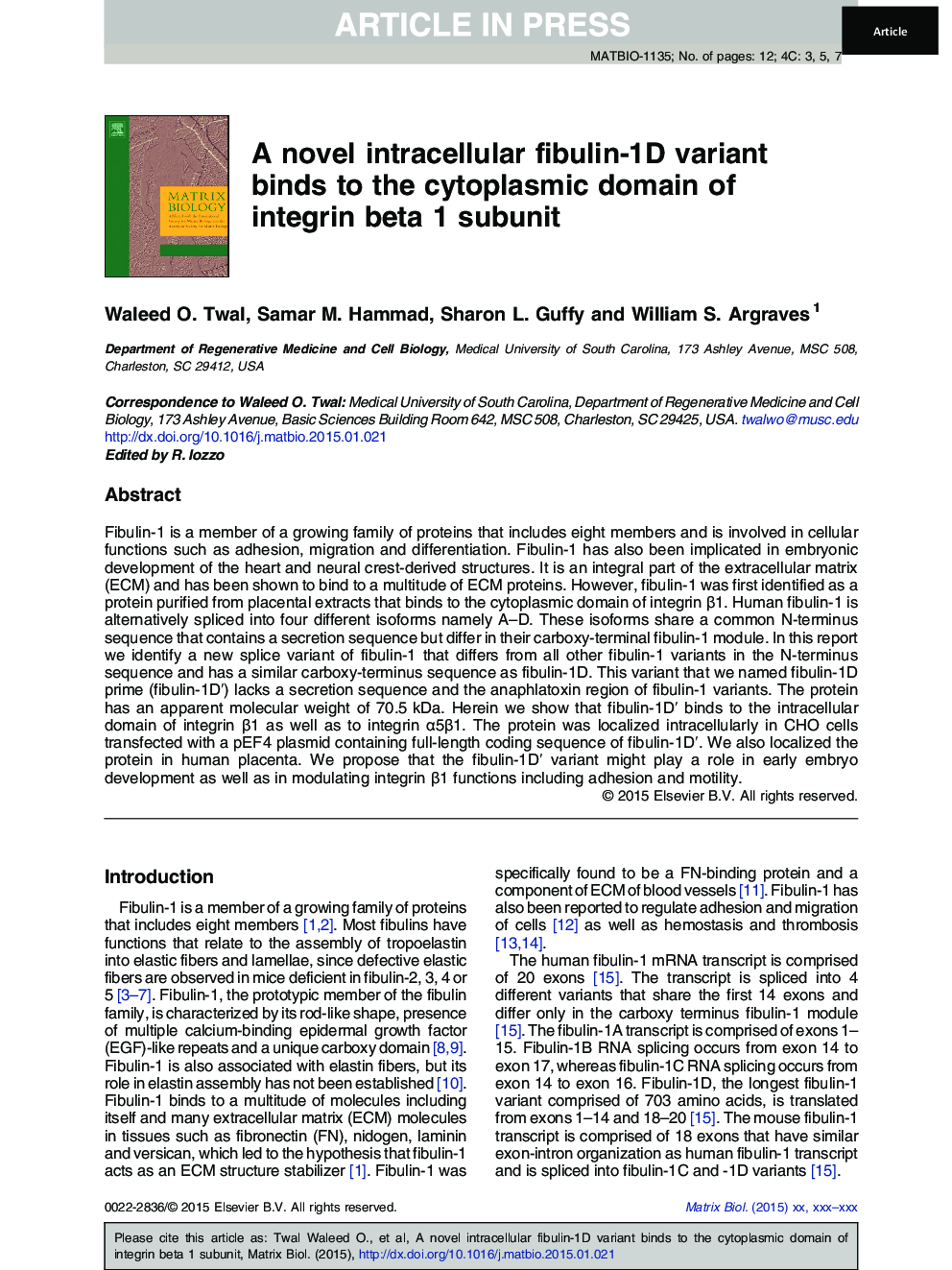| Article ID | Journal | Published Year | Pages | File Type |
|---|---|---|---|---|
| 8455236 | Matrix Biology | 2015 | 12 Pages |
Abstract
Fibulin-1 is a member of a growing family of proteins that includes eight members and is involved in cellular functions such as adhesion, migration and differentiation. Fibulin-1 has also been implicated in embryonic development of the heart and neural crest-derived structures. It is an integral part of the extracellular matrix (ECM) and has been shown to bind to a multitude of ECM proteins. However, fibulin-1 was first identified as a protein purified from placental extracts that binds to the cytoplasmic domain of integrin β1. Human fibulin-1 is alternatively spliced into four different isoforms namely A-D. These isoforms share a common N-terminus sequence that contains a secretion sequence but differ in their carboxy-terminal fibulin-1 module. In this report we identify a new splice variant of fibulin-1 that differs from all other fibulin-1 variants in the N-terminus sequence and has a similar carboxy-terminus sequence as fibulin-1D. This variant that we named fibulin-1D prime (fibulin-1Dâ²) lacks a secretion sequence and the anaphlatoxin region of fibulin-1 variants. The protein has an apparent molecular weight of 70.5 kDa. Herein we show that fibulin-1Dâ² binds to the intracellular domain of integrin β1 as well as to integrin α5β1. The protein was localized intracellularly in CHO cells transfected with a pEF4 plasmid containing full-length coding sequence of fibulin-1Dâ². We also localized the protein in human placenta. We propose that the fibulin-1Dâ² variant might play a role in early embryo development as well as in modulating integrin β1 functions including adhesion and motility.
Keywords
Related Topics
Life Sciences
Biochemistry, Genetics and Molecular Biology
Cancer Research
Authors
Waleed O. Twal, Samar M. Hammad, Sharon L. Guffy, William S. Argraves,
